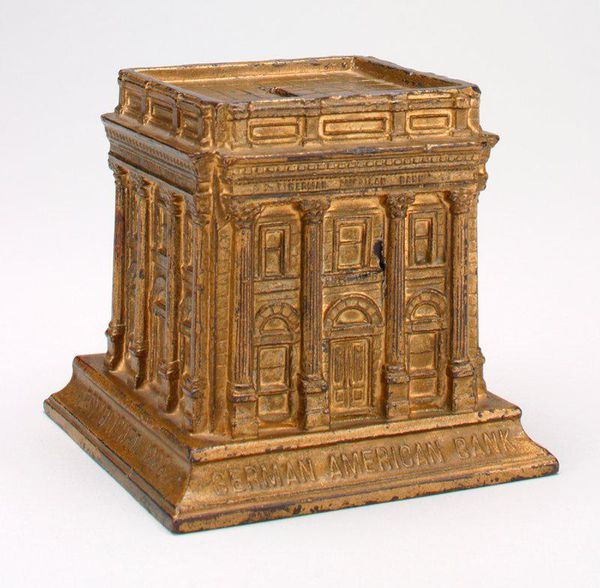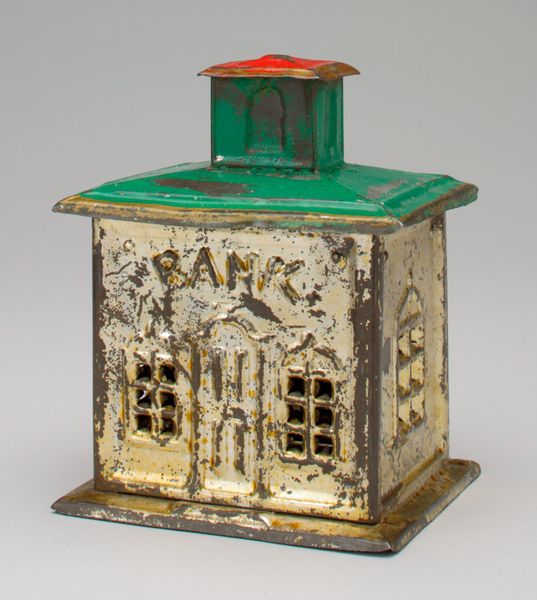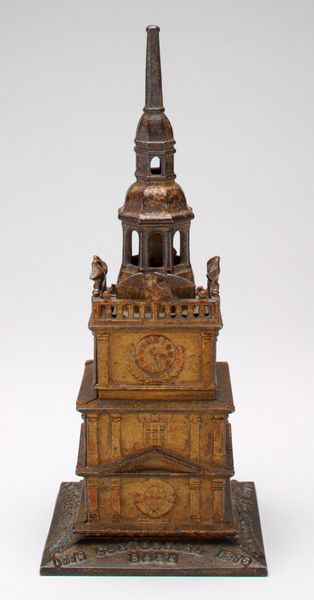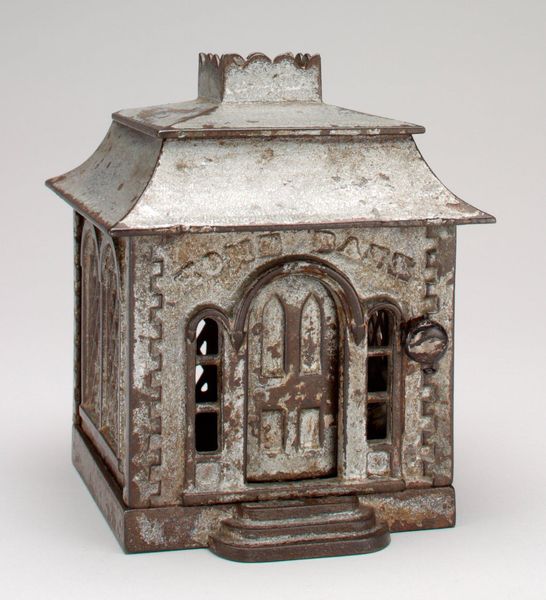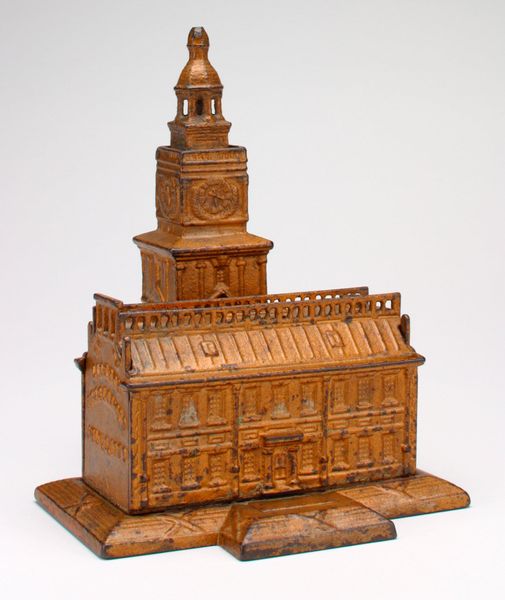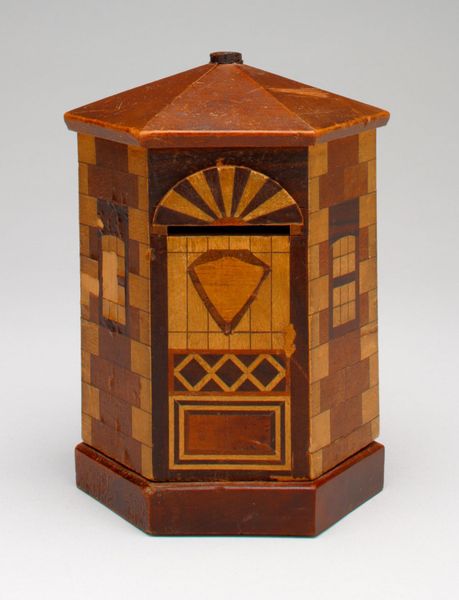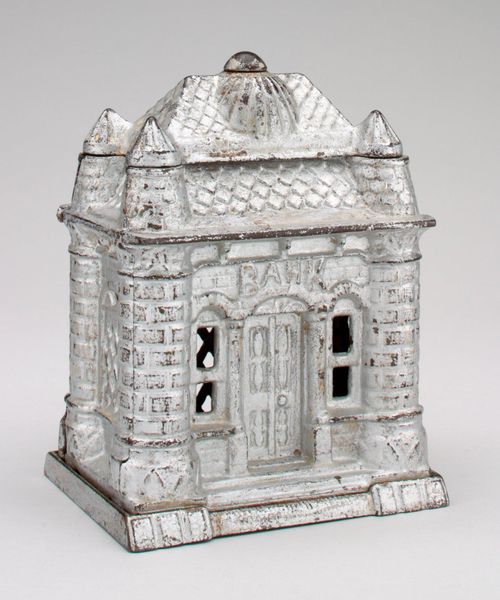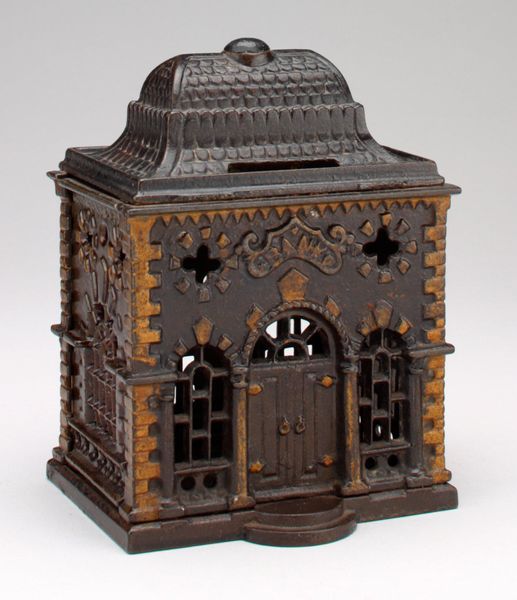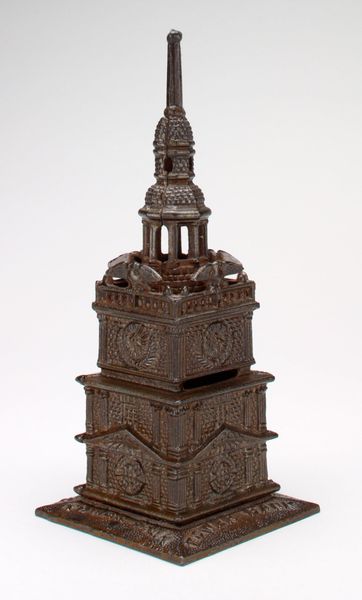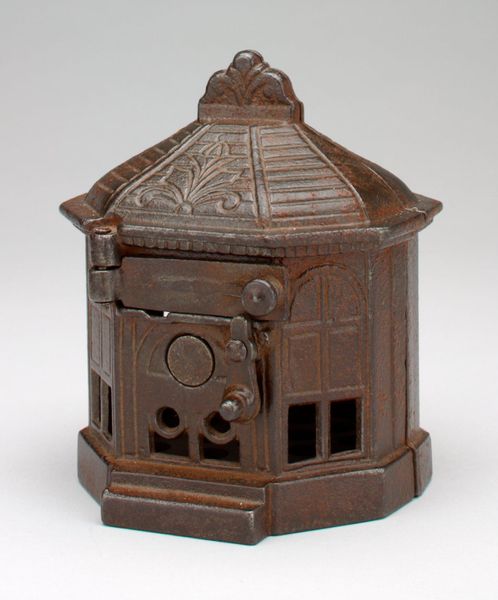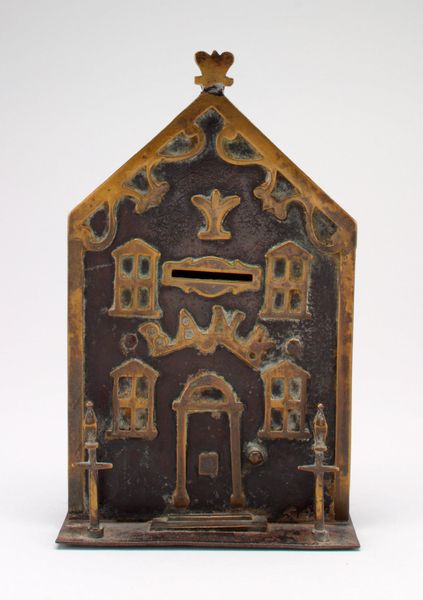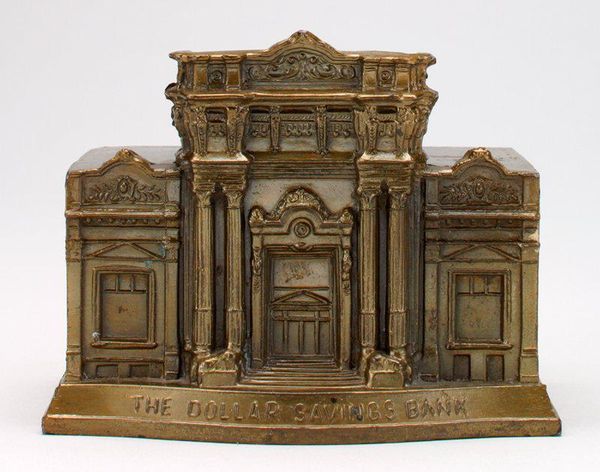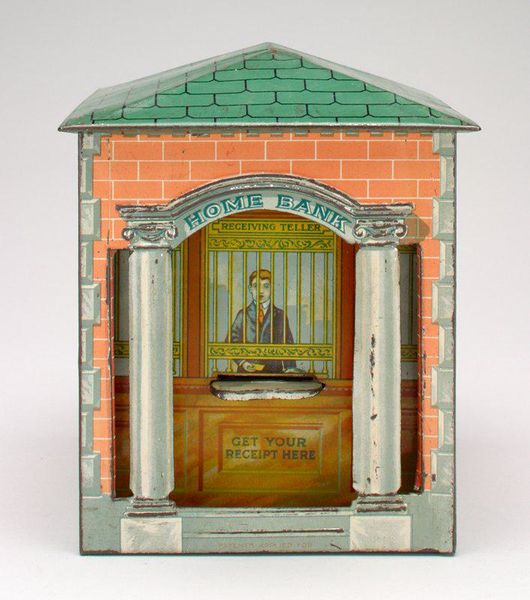
-Den Danske Landmandsbank- still bank c. 19th century
0:00
0:00
brass, metal, sculpture, architecture
#
brass
#
metal
#
sculpture
#
sculpture
#
architecture
Dimensions: 4 9/16 x 3 13/16 x 3 1/8 in. (11.59 x 9.68 x 7.94 cm)
Copyright: Public Domain
Curator: Here we have an intriguing object from around the 19th century: a still bank produced by Kjorenhavns Dorgreb & Metalvarefrabrik. It's crafted from brass and metal, currently residing at the Minneapolis Institute of Art, shaped as miniature building that replicates the facade of the Den Danske Landmandsbank, “The Danish Farmer's Bank.” Editor: It evokes a sense of solidity, and maybe a slight forbiddingness. All that classical architecture, shrunk down. Like a tiny, impenetrable fortress of finance! I immediately focus on the arched doorway and the owl relief, perhaps meant to be seen as the silent wisdom guarding the money of the farmers it serves. Curator: Exactly, the bank building reduced to a portable size, quite literally commodifying finance. It allows everyday citizens to literally internalize a bank—saving money at home within a symbolic architectural structure, as something to keep producing. I also see the influence of the material itself, common metals shaped by industry, available and useful, almost mass produced in its availability and common utility. Editor: The image of the bank made this small has, too, a particular symbolic potency. Beyond mere safekeeping, what did owning a tiny replica represent? Did it imply financial prosperity? Maybe civic pride linked with supporting such a national institution? I wonder how farmers regarded the architectural features and symbols on this diminutive facade. Curator: I think, also, consider its relationship to architecture itself. Rather than an artisan object, this feels closer to manufactured souvenir, a scale-down reminding you of your relationship with finance daily as a matter of course. Who made it— the Kjorenhavns factory? – what conditions existed there for it to come into being? How was it distributed among the consumers, not of high art, but daily items? I see such things, not artistry as message or anything, but instead conditions and relationships given shape and utility. Editor: That's such a stark perspective – from symbolism to condition of production – yet seeing that utilitarian form still makes one want to understand the object, both at its inception as raw metal material, formed industrially, to its existence today, housed in the Institute of Art and bearing witness to culture. It represents, still, value beyond production, isn't it? Curator: Perhaps. I still see the physical reality that made that symbol possible, the labor… and then its life cycle too, finally residing here and preserved – yet born from raw material and shaped by labor and made useful for accumulation of resources for many. A rich story. Editor: Yes, one told through material, but also through lingering associations. Thank you for a look beneath the metal.
Comments
No comments
Be the first to comment and join the conversation on the ultimate creative platform.
